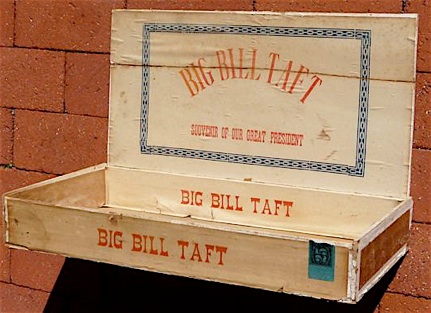Jumbo Cigars
A National Cigar History Museum Exhibit
© Tony Hyman
Modified and expanded: February 24, 2011

Jumbo Cigars
A National Cigar History Museum Exhibit
© Tony Hyman
Modified and expanded: February 24, 2011
The cigars are the novelty, not the box. Eleven inch long “jumbo” cigars originated in the 1880’s though most of the boxes pictured in this Exhibit are 75 years newer. Jumbos were taxed and packed according to different rules than cigars because the Government considered them tobacco novelties, not cigars.
Jumbos were usually cellophaned, with the bands providing possibilities for a custom touch. Jumbos are commonly sold as souvenirs of places or events, including cities, political conventions, national parks, amusements and attractions, and the like. The most common jumbo brand is COVERED WAGON, though not all COVERED WAGONS are Jumbos.
The earliest Jumbo non-cigar cigar
The “Concha Especial” frontmark is a joke, as Concha (shell) is a name usually reserved for small cigars, about 3.5” long. [2915] [2920]

Big Bill Taft jumbo
Very rare 19” x 9 3/4” wood jumbo box, the only one I’ve seen in 60 years. Made by Wolf Bros. in Red Lion, PA, Factory 1514, 9th Dist. PA.
A big “cigar” created as a “Souvenir of our great President” in 1912 to honor the campaign of William Howard Taft, a man who weighed in excess of 300 pounds.
The oversize lid was fragile and easily broken, the reason why large wooden cigar boxes that held 25 Jumbos (or 500 or 1000 cigars) rarely survive. [P0640]

